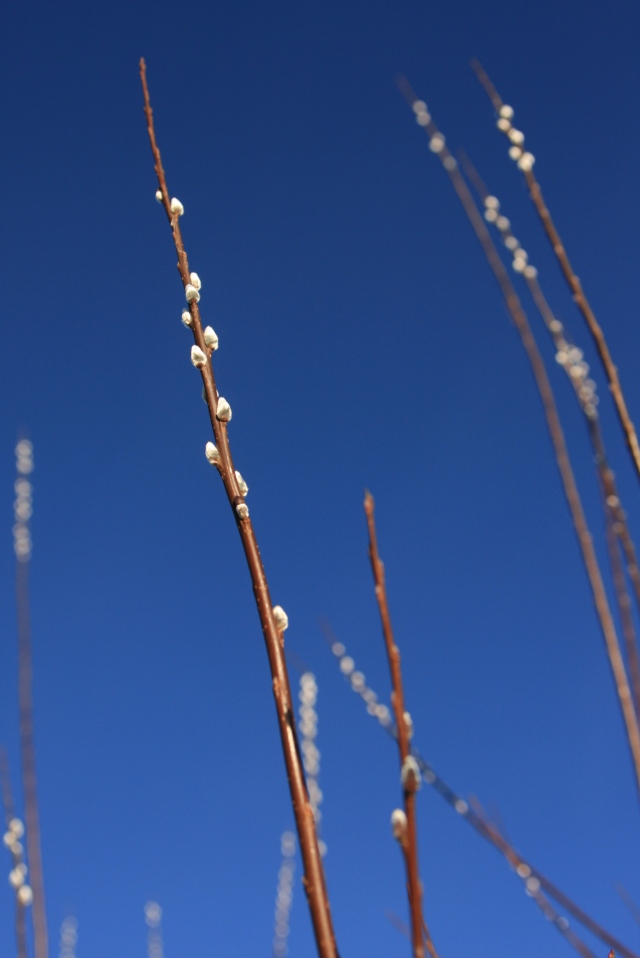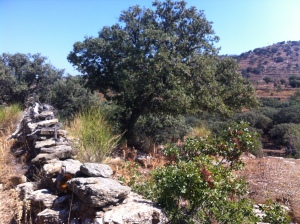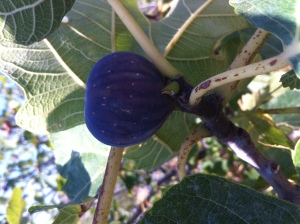There are lots of reasons to plant spring-fruiting elaeagnus, but flavour, sadly, is not one of them.

I have inherited in my garden several hedges made of this elaeagnus – it is, I think, Elaeagnus x ebbingei, a plant widely used in gardens and landscaping. Its leaves have a pleasant silvery sheen and it is a well behaved yet strongly growing evergreen tree. It is a nitrogen-fixing plant, which makes it very useful to have near fruit bushes and trees because it cuts down on the need to fertilise. The most compelling reason to grow this plant however, is the beautiful fragrance which lingers around it in mid-late autumn.
In March this year I noticed lots of oval fruits, 1-2cm long hanging on the bushes. Having confirmed that they were edible, I immediately tasted one of the silvery-green berries, ignoring the footnote about the fruit being astringent when unripe. The most extraordinary thing happened – my mouth turned in to a carpet! It was both surprising and unpleasant. Not like a lemon, which causes you to pucker; or a chilli, which gives the sensation of heat; or rhubarb, which makes tooth enamel feel gritty. No, it was a definite carpet sensation.
Concluding (insightfully) that the berries were not ripe, I left them for another week by which time the fruits were pink. I sampled them again: Carpet-mouth.
A week or two later, the berries were red, plump and well, ripe. Although the carpet sensation had mostly disappeared (lingering just a little in the skin of the berry), the flavour was disappointing and quite honestly, not worth the risk of eating an under-ripe fruit by mistake.
Ken Fern, in his enormously useful book ‘Plants for a Future’, describes eating this fruit by the handful upon finding it on the central reservation of a dual carriageway near Heathrow, before being moved on by a policeman. Perhaps the fruit of the Heathrow bush was a variation which tastes nicer than my garden hedge (perhaps some time I’ll try it and find out).
I would like to be enthusiastic about a fruit which appears at such a useful time of year, so I won’t write it off just yet. However, I’ve limited my plans for planting it in the field to areas where the fragrance will be appreciated.








 By luck, the first one I picked was The One – brownish blue on the outside and dark red and juicy on the inside when I pulled it apart. Popping half in to my mouth without expectation of success, I was completely taken by surprise! The warm, sticky fig had an interesting and significant flavour and it was deeply sweet and well, fig like. I ate three more before I began to feel a teeny bit sick from the sweetness.
By luck, the first one I picked was The One – brownish blue on the outside and dark red and juicy on the inside when I pulled it apart. Popping half in to my mouth without expectation of success, I was completely taken by surprise! The warm, sticky fig had an interesting and significant flavour and it was deeply sweet and well, fig like. I ate three more before I began to feel a teeny bit sick from the sweetness.



